| Material | k W m-1 K-1 |
|---|---|
| Air | 0.025 |
| Water (liquid) | 0.590 |
| Ice | 2.100 |
| Quartz | 8.800 |
| Clay minerals | 2.900 |
| Organic matter | 0.250 |
| Stainless steel | 21.000 |
| Copper | 380.000 |
Heat Conduction
How is heat transmitted through a substance or between substances
Heat Conduction

Thawing of permafrost is a slow process; involves conduction of heat into the subsurface from the surface
Learning Objectives
- Describe the process of heat conduction & explain how we can predict soil warming
- Understand how soil temperatures react to solar heating and how they change over time
- Define the term thermal admittance and its relationship with soil surface temperature
- Understand the concept of heat sharing (between soil and the atmosphere)
Recall: Heat Capacity of Compound Substances
The heat capacity of a mixture of substances can be calculated from the heat capacity and volume fraction of each component. For soil:
\[ C_{soil}=C_{m}\theta_{m}+C_{o}\theta_{o}+C_{w}\theta_{w}+C_{a}\theta_{a} \qquad(1)\]
- \(\theta\) is the volume fraction of mineral (m), organic matter (o), water (w) and air (a)
- Note: \(C_a\) is very small relative to the other values of C
Test your knowledge (iClicker)
How does the heat capacity of the soil change as a function of soil moisture?
- A Linearly
- B Exponentially
- C It doesn’t vary with soil moisture
Heat Capacity of Soils

Porosity & saturation are the a dominant controls, mineral vs. organic is secondary
Heat conduction
The process of heat transfer in a material medium in which molecular kinetic energy is passed from molecule to molecule.
- Heat conduction is most effective in solids, but still occurs in liquids and gases
- Mass motion (convection) is not involved

Fourier’s Law
- Heat flux density (\(H_G\)) is proportional to the temperature gradient and the thermal conductivity \(k\):
\[ H_G = -k \frac{T_2 - T_1}{z_2 - z_1} \qquad(2)\]
- where \(\frac{T_2 – T_1}{z_2 – z_1}\) is the temperature gradient
- We use z for distance because we are interested in vertical heat flow in the soil
Soil Heat Flux

Thermcouples are used to measure temperature changes with depth in the soil
A Positive Temperature Gradient
- This is typical of clear nights night
- Soil surface cools due to long-wave radiation loss (\(LW^* = R_n < 0\)) from the ground
- Why is there a negative sign in Fourier’s Law?
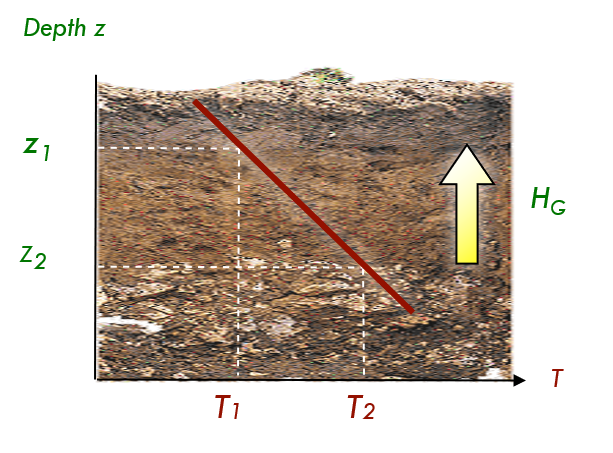
A Negative Temperature Gradient (iClicker)
This is typical of sunny days. Which position will have warmer soil temperatures?
A \(z_1\)
B \(z_2\)
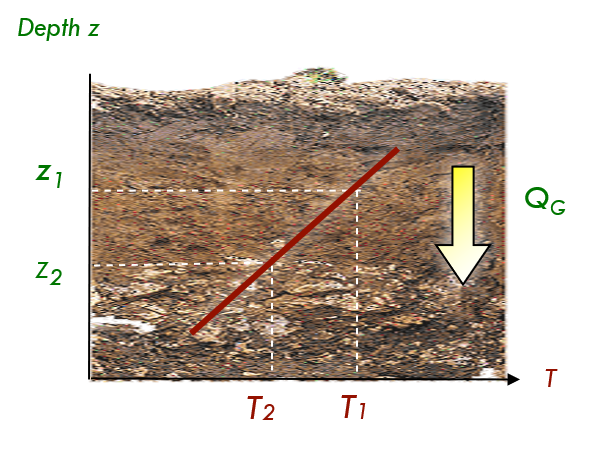
Thermal Conductivity \(k\)
- The thermal conductivity \(k\) is a measure of a materials ability to conduct heat
- For a mixture, it depends on the conductivity and proportion of the components of the mixture
- But there is no simple formula for calculating k of a mixture like there was for \(C\)
Thermal Conductivity \(k\)
- Wet soils > dry soils
- Mineral soils > organic soils
- Fresh snow is a good insulator for the soil
- The high proportion of air volume explains why fleece is such a good insulator
| Material | k W m-1 K-1 |
|---|---|
| Mineral soil1 (dry) | 0.27 |
| Mineral soil1 (wet) | 1.70 |
| Peat soil2 (dry) | 0.06 |
| Peat soil2 (wet) | 0.50 |
| Snow (fresh) | 0.08 |
| Snow (old) | 0.42 |
| Wood3 (dry) | 0.13 |
| Sheep’s fleece | 0.04 |
Soil Water and Thermal Conductivity
Non-linear relationship between k and soil water content (\(θ_w\))
- Adding water to dry soil (a) initially causes \(k\) to increase rapidly
- Rapid increase in area of contacts between soil particles resulting from water film
- Rate of change decreases for soils closer to saturation (b)

Mineral vs. Organic Soil
Thermal Diffusivity (K)
\(K\) indicates how quickly soil at depth will warm or cool in response to heating or cooling at the surface.
\[ K = \frac{k}{C} \qquad(3)\]
- How fast will a temperature wave diffuse downward into soil. Proportional to rate of heat conduction (\(k\)) to and inversely proportional to the heat capacity (\(C\)).
- Units: m2 s-1
Mineral vs. Organic Soil
Why the Curious Shape?
\(k\) increases rapidly with initial increase in water content (\(\theta_w\)) causing \(K\) to also increase rapidly.
- At higher \(\theta_w\) the slow increase in k together with the steady rise of \(C\) (in the denominator) causes \(K\) to decline.
Practical Implications
There is an optimum water content for warming, referred to as “field capacity”.
- Organic soils are difficult to manage from a soil temperature perspective.
- Sand is sometimes added to organic soils to increase \(K\) in agriculture.
- In forestry organic material around seedlings is removed or mixed with the subsurface mineral soil
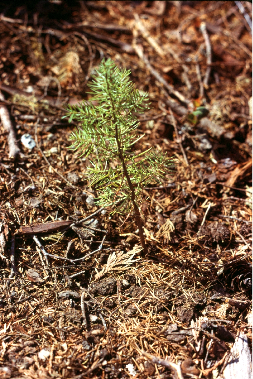
Soil temperature waves
The variation of temperature with depth can be thought of as waves moving down through the soil in response to radiation “forcing” at the surface.
- There are annual waves, diurnal waves, and waves with shorter periods due to clouds
- In typical mineral soils:
- Annual waves penetrate to ~ 10 m
- Diurnal waves to ~ 50 cm
- Cloud waves to ~ 5 cm
Annual Waves
Mean soil temperatures by month in Burns Bog
Shorter Timescale Waves
Soil temperatures in Burns Bog, June 2023
Soil Thermal Admittance \(\mu\)
The ability of the soil surface to accept or release heat following a change in soil heat flux (\(H_G\)). How well it can “soak it up” without changing temperature much. It is given by:
\[ \mu = \sqrt{k C} \qquad(4)\]
- \(\mu\) is the soil thermal admittance; \(k\) is the thermal conductivity and \(C\) is the heat capacity
- Note the similarities to thermal diffusivity Equation 3
- Units: J m-2 K-1 s-1/2
Thermal Admittance and Surface Temperature
For a change in soil heat flux (i.e., \(\Delta H_G\)), the change in surface temperature (\(\Delta T_s\)) is inversely proportional to \(\mu\)
- For the same energy added:
- Soil with a low \(\mu\) warms and cools more rapidly
- Soil with a high \(\mu\) warms and cools more slowly
\[ \Delta T_s = \frac{\Delta H_g}{\mu} \qquad(5)\]
Soil Thermal Admittance \(\mu\)
- The highest value of \(\mu\) occurs at saturation
- Organic soils have lower values of \(\mu\) than mineral soils

Test your knowledge (iClicker)
For the same input of energy, which of the two soils likely will warm up more rapidly (at the surface)?

Test your knowledge (iClicker)
Which of the two surface conditions (same location) experiences a higher \(\mu\)?

Surface Thermal Climates
Thermal climate of soil is tied to \(\mu\):
- High \(\mu\): small daily surface temperature range
- Wet areas, bare mineral soil, bare rock
- Low \(\mu\): large daily surface temperature range
- Dry mineral, organic soils, vegetative cover

High Surface Temperatures
Excessively soil surface temperatures can cause damage to young plants.
- This creates issues in forestry and agriculture.

Low Surface Temperatures
The worst frost damage occurs on vegetated organic soils.
- Insulating effect of vegetation and organic layer prevents soil heat from flowing to surface at night
- i.e. these surfaces have low \(\mu\)
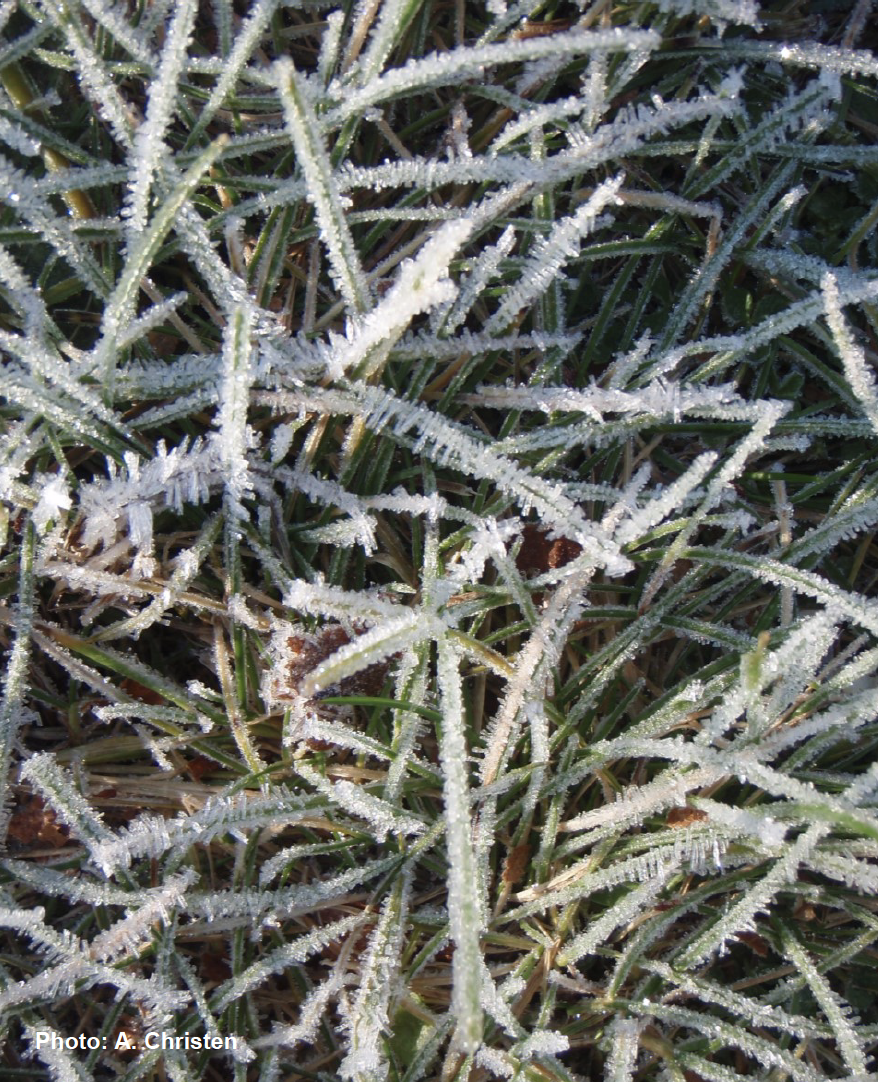
Low Surface Temperatures
- Surface temperatures can drop > 20 K overnight for soils with low \(\mu\)
- Organic and dry mineral soils
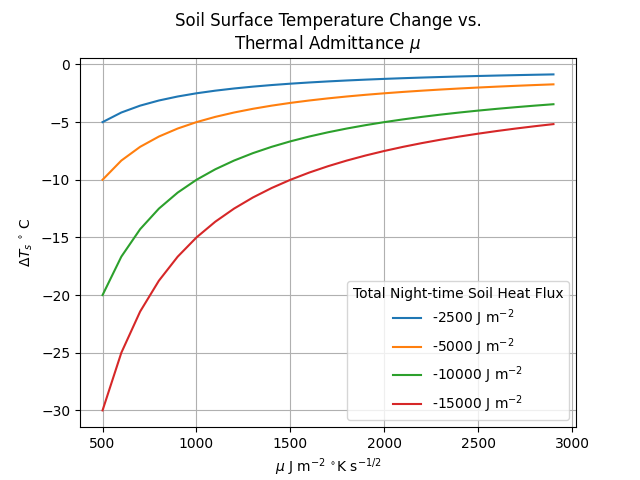
Mulch
- Mulch is a natural or artificial covering of soil that can alter soil temperature or moisture regime.
- Mulches can moderate extreme soil temperature variation (heat, frost), increase warming of soils, conserve water, and control weeds.
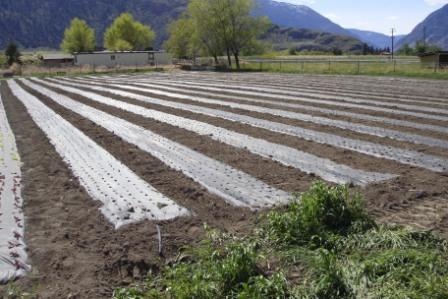
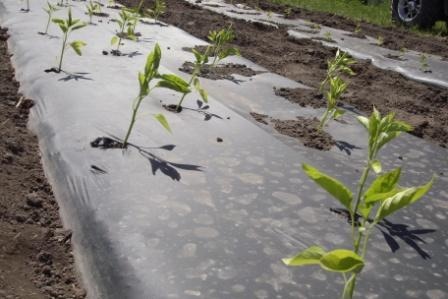
Opaque mulches
- Black mulches will usually raise soil temperature
- Especially black plastic
- Non-black mulches usually reduce soil temperatures

Transparent Mulches
Transparent plastic “traps” energy beneath it (like a greenhouse) allowing it to be conducted into the soil.
Transparent plastics raise soil temperatures more than black plastics.
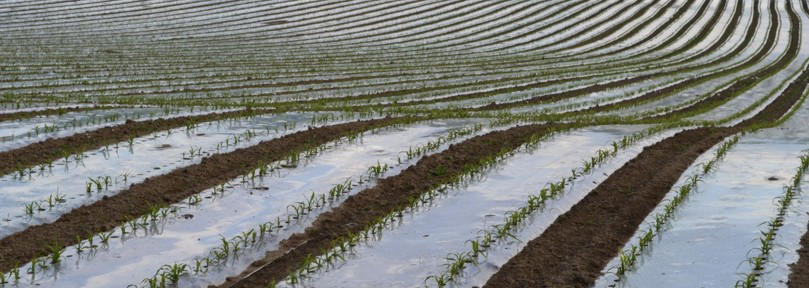
Energy Balance of Ecosystems
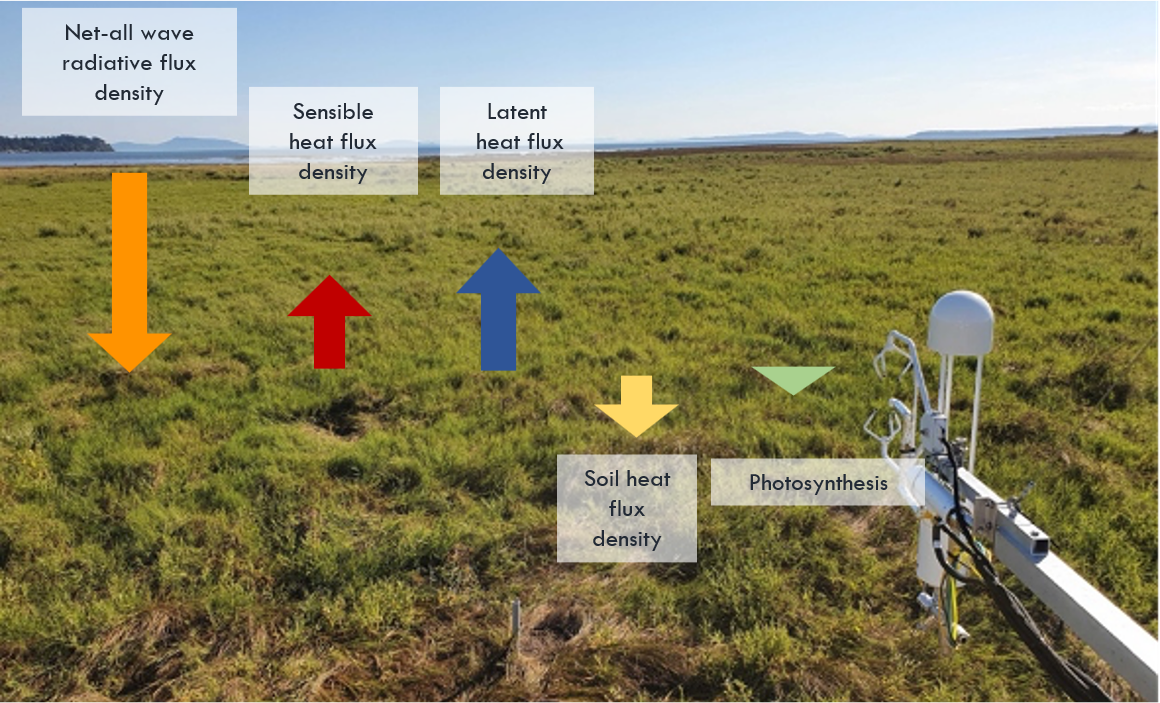
Soil heat flux is a component of the total energy balance
Energy Balance of Ecosystems
Net radiation (\(R_n\)) is partitioned between latent heat fluxes (\(H_L\)), sensible heat fluxes (\(H_S\)), ground heat fluxes (\(H_G\)), and residual storage component (\(\Delta S\)).
- \(\Delta S\) includes photosynthesis and other minor outlets
\[ R_n = H_L + H_S + H_g + E^* \qquad(6)\]
Heat sharing
The partitioning of total ‘sensible’ heat flux between the soil (\(H_G\)) and the atmosphere (\(H_S\)).
\[ \frac{H_g}{H_S} = \frac{\mu_g}{\mu_a} \qquad(7)\]
- Soil (\(H_G\)) and atmosphere (\(H_S\)) share in accepting heat during daytime and releasing heat at night
- \(\mu_g\) and \(\mu_a\) are the soil and atmospheric thermal admittance respectively
- \(\mu_a\) increases with wind speed and convection (mixing)
Summary on Soil Climates
- \(K\) depends on soil type (largely due to porosity but also organic matter content) and soil water content \(\theta_w\).
- Mineral soil has deeper temperature wave penetration (warms faster) than organic soil, and wetter soil has deeper temperature wave penetration than dry soil.
- Presence of surface organic layer has a strong effect on depth of T waves, the average T at depth, and the range of surface T.
Take home points
- Fourier’s law of heat conduction - A change in soil temperature with depth (i.e. a temperature gradient) is proportional to a heat flux density.
- Thermal conductivity \(k\) relates the temperature gradient to the heat flux density.
- k is increasing with soil water content - but not linearly.
- Thermal diffusivity \(K\) = k / C combines the effect of thermal conductivity and heat capacity and indicates how quickly soil at depth will warm or cool in response to heating or cooling at the surface
- Thermal admittance \(\mu \sqrt{k C}\) is the ability of a surface to accept or release heat
- Thermal admittance increases with water content of the soil.
- Low thermal admittance explains why some soil surfaces (dry surface organic layer) get very hot and cold (frost damage to young plants)
- Heat sharing refers to partitioning of energy between soil and atmosphere. Mulches change soil temp by altering heat sharing